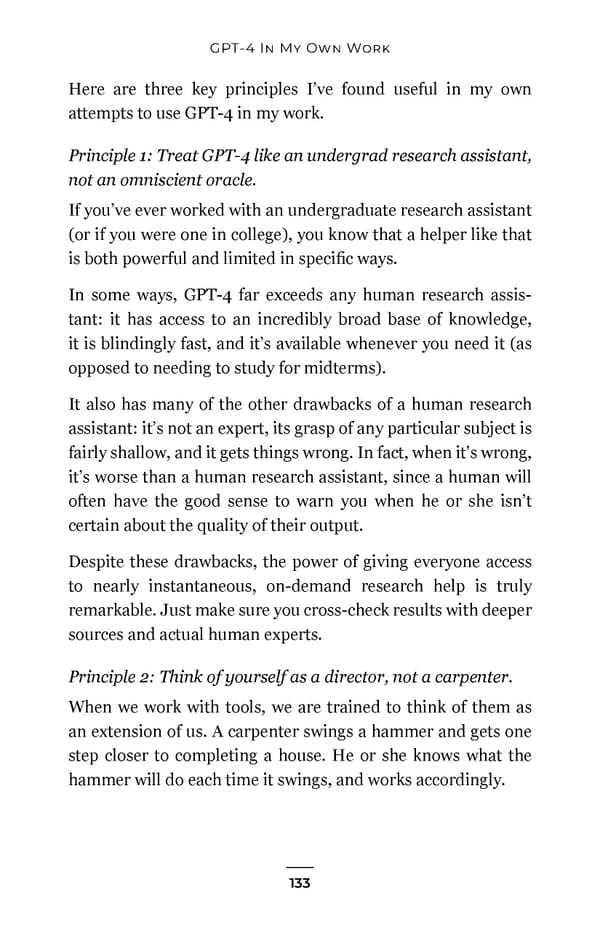GPT-4 In My Own Work Here are three key principles I’ve found useful in my own attempts to use GPT-4 in my work. Principle 1: Treat GPT-4 like an undergrad research assistant, not an omniscient oracle. If you’ve ever worked with an undergraduate research assistant (or if you were one in college), you know that a helper like that is both powerful and limited in specific ways. In some ways, GPT-4 far exceeds any human research assis- tant: it has access to an incredibly broad base of knowledge, it is blindingly fast, and it’s available whenever you need it (as opposed to needing to study for midterms). It also has many of the other drawbacks of a human research assistant: it’s not an expert, its grasp of any particular subject is fairly shallow, and it gets things wrong. In fact, when it’s wrong, it’s worse than a human research assistant, since a human will often have the good sense to warn you when he or she isn’t certain about the quality of their output. Despite these drawbacks, the power of giving everyone access to nearly instantaneous, on-demand research help is truly remarkable. Just make sure you cross-check results with deeper sources and actual human experts. Principle 2: Think of yourself as a director, not a carpenter. When we work with tools, we are trained to think of them as an extension of us. A carpenter swings a hammer and gets one step closer to completing a house. He or she knows what the hammer will do each time it swings, and works accordingly. 133
 Impromptu by Reid Hoffman with GPT-4 Page 139 Page 141
Impromptu by Reid Hoffman with GPT-4 Page 139 Page 141